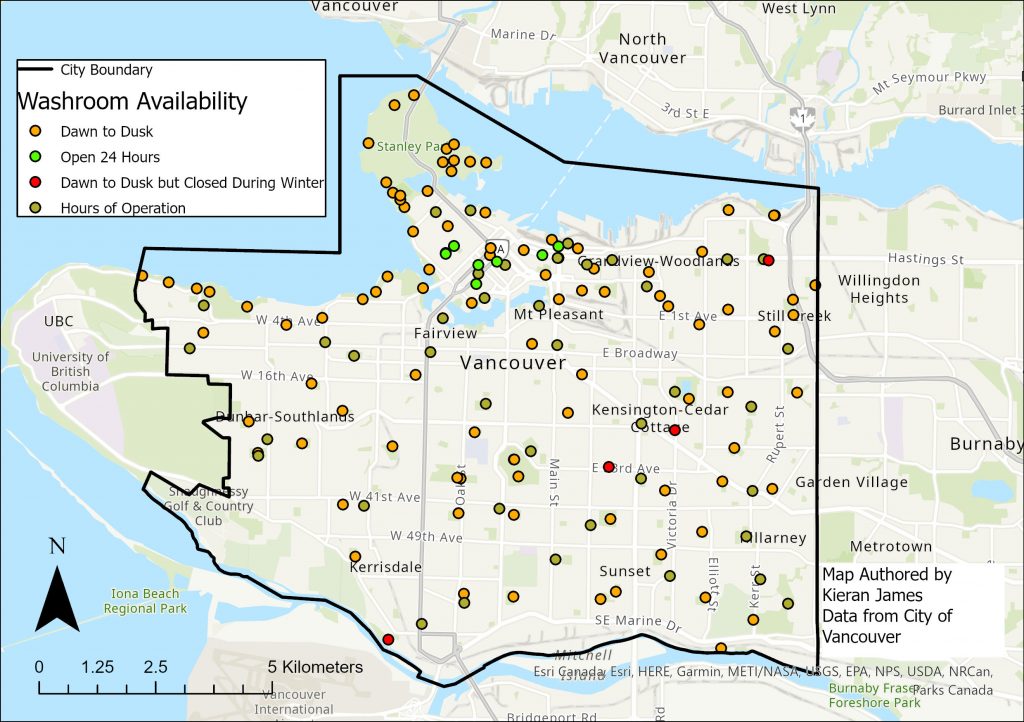Going to the washroom is a biological need that all humans share, yet how we go to the washroom varies greatly. Unlike eating or drinking, going to the washroom is not easily portable, nor is it socially acceptable to do anywhere. As such, dedicated facilities are needed to fulfil this biological imperative. While going to the washroom in your own home is a menial task, going to a washroom while out in public can be exceptionally difficult, especially for those with disabilities, or specific biological needs like menstruation (Greed, 2016). Although most buildings have washrooms, many are restricted to employees, customers, or private functions, thus are not available for everyone. This is an important distinction to make, even though a washroom may be used by the public, it is not necessarily public and can restrict usership, which makes it a private good providing a public need (Németh, J., 2009). The Covid-19 pandemic has further exasperated this issue as stores, malls, and the like close their doors and washrooms to the general public. One of the best solutions is by providing more public washroom infrastructure, as called for by many businesses during the pandemic, thus removing the need for restrictive, private toilets.
In recent years, the City of Vancouver has determined that it has insufficient public washroom infrastructure to meet the demands of a growing population and tourism industry. The majority of the existing infrastructure is inadequate for modern standards of accessibility, social needs, and sustainability. Vancouver has 11 outdoor automated public toilets and 2 staffed comfort stations, all of which are located downtown. There is a public washroom in each of the 22 public libraries and 27 community centers. The majority of Vancouver’s public washroom infrastructure is located in parks, with heavy clustering in Stanley Park and along public beaches.

A map of the existing public washroom facilities in the City of Vancouver
Of the existing washrooms, only 7 are open all hours of the day, all of which are located in the downtown core. The majority of the existing public washrooms are only open during daylight hours, as community centers and libraries generally operate exclusively during the daytime, especially during the Covid-19 pandemic.

A map of the hours of operation for Vancouver’s public washrooms
The accessibility of public washrooms is a major concern, as many people with disabilities are restricted by a bladder leash. Cooper et al. (1998) state that “it is recognised that the provision of accessible public toilets provides the minimum conditions under which disabled people can participate in social and political life. Without accessible toilets, people are subject to ‘the bladder’s leash’” (as cited in Kitchin & Law, 2001). When it comes to Vancouver’s accessible washrooms for those in wheelchairs, there are only 19 available, clustered in downtown and Stanley Park.

A map of the wheelchair accessible public washrooms in Vancouver
While most of Vancouver’s public washrooms are located downtown and in Stanley Park (as seen in the chart below), due to the pure volume of people in these areas, it is important to have equitable access to public washroom infrastructure throughout the city.

Public Washroom Count by Neighbourhood